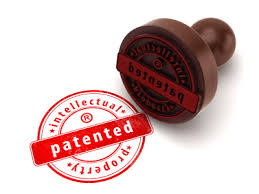Do you want to know about the patenting of business methods?
We are going to discuss here a topic of patenting and the business methods. Surely you would find this article more interesting and informative. Keep your eye on this to get an idea about the patents.
Duration of Patent protection:


The length of the term of protection is seen as the minimum time needed for a patentee to operationalize his invention and reap a reasonable amount of benefit from its use after which the patent will fall into the public domain. Blanket protection is indeed to debate. One may argue that the balance between the need to encourage inventions through patents and the society’s interest is lost; more so in developing countries as the scale may fit too much in favour of developed countries. When the beneficiary patentee exercises his patent rights, the choices of patentee tend to favour developed countries. It might be an obstacle in terms of transferring the technology to the developed countries.
Patenting of business methods:


Patenting of business methods has been commenced in the U.S., accepting it as legitimate subject of patent grant. Indian Patent Act as amended in 2005 does not permit the patenting of the business methods.
Biotechnology, Traditional knowledge and Plant varieties:


In addition to the above general propositions, there are specialized areas worth mentioning. Patents in relation to microorganisms, biotechnological innovations and processes as well as bio-resources have posed serious challenges to the civil society. The patent or similar sui generis protection to seeds and plant varieties is mandated by TRIPS.
The protection of plant varieties and farmers rights act, 2001 was passed and enforced. Conservation of biodiversity is projected as part of IPRs and convention on biodiversity is considered as providing rights akin to IPRs. In India the Biological Diversity Act, 2002 was passed and was brought into effect from 1 July, 2004.
Traditional knowledge has been accepted as an IP on which TRIPS council has been asked to work further. Indian patent law disallows the patenting of anything which is a part of traditional knowledge, but the same are allowed to be patented in some other countries.
Layout designs (topographies) of integrated circuits:


Protection of layout designs of integrated circuits as intellectual property is a relatively new concept. An integrated circuit (IC) incorporates a large number of electronic components on a chip. A chip is a small piece of a type of material called semi-conductors, identified as is obvious from the name to have electrical properties between the two extremes of conductors and insulators. Integrated circuits (ICs) are manufactured with detailed plans subject to the specific function that the chip is meant to perform. These detailed plans are called layout designs.
Technical progress in recent times has been biased towards miniaturization, and this has become possible through ICs. The stress now is on incorporating more features in less space, hence a continuous evolution of integrated circuit technology and design.
Need for protection:


Manufacture of ICs and improvements in design require considerable investment and a high degree of mechanical precision and skill. Copying an integrated circuit design involves only a fraction of the costs. Techniques such as photographing the different layers of ICs to reproduce the layout design are relatively cheap.
Protection of layout design has been introduced with an aim to prevent instances of copying. Reverse engineering that leads to the creation of an improved layout design based on a protected layout design is considered fair in the semiconductor industry.
In developed countries, cases of slavish copying of layout designs are rare. In fact, several countries questioned the need for special protection to layout designs of ICs. According to India and the UK, ICs could be protected under copyright, while Argentina argued that the provisions on unfair competition in the Paris convention should be applied here.
Rights protected:


Yet, the system has been incorporated in the agreement on TRIPS. For protection, a layout design need only be original as against the novelty and nonobviousness requirements for the grant of a patent. The owner of the design gets the exclusive right to reproduce it, integrate it on a chip and market the semiconductor device incorporating the chip. The owner even gets protection against marketing of an article that incorporates an IC that contains an unlawfully reproduced layout design. Respite, however, is given in case the person concerned ‘did not know’ and ‘had no reasonable ground to know’ about the presence of an unlawfully copied design in the IC or the article he was marketing.
Incorporating the concept of innocent offenders has been included because of the limitation of the developing countries. Making developing countries responsible for chips used within the products they import would have been entrusting them with the impossible task of taking apart all the imported articles to verify the origin of the components.
Monopoly rights is not guaranteed in the protection of layout design. It does not prevent independent development of such designs even if they are identical to those already protected.
To know more detailed information and the business services -> Click here.